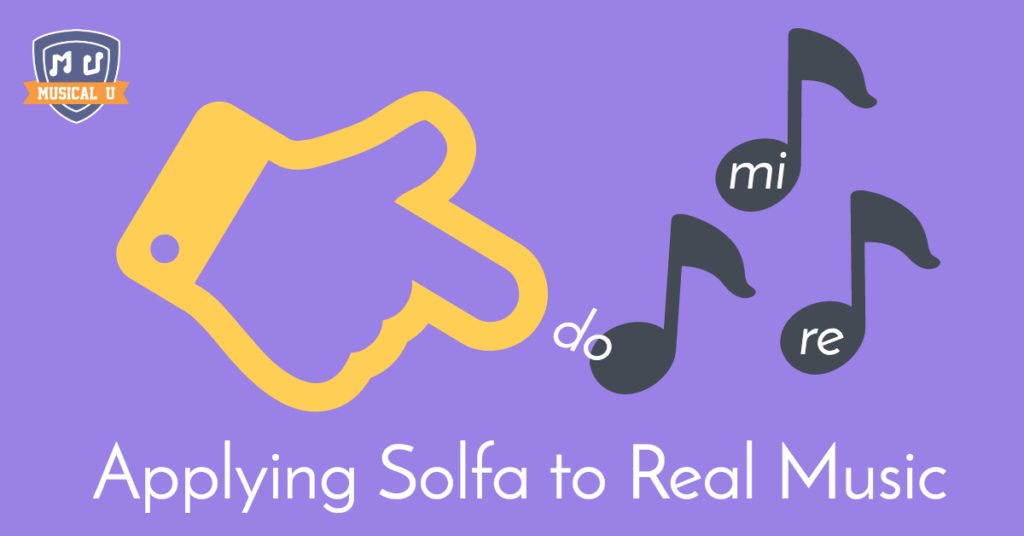Can you imagine listening to a piece of music and knowing exactly what notes you’re hearing? And what that would do for your ability to play what you hear on your instrument? Solfa is a magical key that unlocks the pitches and harmonies in all the music you hear.
Solfa Warm-Up
In previous articles, we’ve been exploring solfa for hearing pentatonic and diatonic melodies.
- Discovering Pentatonic Solfa, Part 1: Exercises
- Discovering Pentatonic Solfa, Part 2: From Pentatonic to Diatonic
There’s a lot of skill building in the exercises, so consider them a go-to resource for learning or refreshing your solfa skills.
If you’re just starting out with solfa, we have some great resources for you. You can start here:
Today, we’ll take the next step and apply all our learning from these exercises to real music.
Refresher: Do, Fa, and Sol
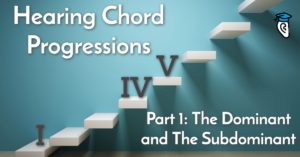 But before we launch into our real music, let’s remember that there are three crucial steps in a scale to keep in mind when transcribing or playing by ear: do, fa and sol. The first, the fourth and the fifth step of a major key are very important because they represent the main coordinates of a tonal melody or chord progression.
But before we launch into our real music, let’s remember that there are three crucial steps in a scale to keep in mind when transcribing or playing by ear: do, fa and sol. The first, the fourth and the fifth step of a major key are very important because they represent the main coordinates of a tonal melody or chord progression.
Hearing Chord Progressions, Part 1 is a fantastic resource for learning to hear the do, fa, and sol (aka the I, IV, and V, as well as tonic, subdominant, dominant) for both melodies and basslines.
Practice with real music
Now let’s focus on real music, beginning with the sung melody. Don’t try to remember the instrumental introductions, the counterpoints, etc. – focus on the melody only. Now don’t take it personally that we’re starting with children’s music. These songs are perfect for practicing the skills you want to develop. They are simple, and they are positive so you will also keep a good vibe while practicing. Stay tuned, take all the necessary steps and soon you’ll get to the pop and rock repertoire.
Each exercise below presents a melody and a series of questions about that melody that walks you through the steps of using solfa to hear, transcribe, and/or play that melody on your instrument by ear. Please do your best to figure out the answer to each question on your own, before pressing “play” on the audio track to check your work.
Michael Row Your Boat Ashore
First let’s remember how it feels when you find the tonic, starting with this well-known melody:
What’s the tonic?
How many notes did you hear? Is this a pentatonic song or does it use the whole diatonic scale?
How do you sing that melody in solfa?
Now try to find the real notes on your instrument. If you can’t find the right real notes, use this scale sung with real notes as a reference:
Can you name the key of this song?
Show answer
Tip: The tonic gives you the name of the key. The mood of the song – either happy or sad/serious – gives you the quality of the key – major or minor.
Now you can add a further step of transcribing the melody (then check your transcription with the answer below) or just use the score to check your work:
Show answer

The Noble Duke of York
For the next example, feel free to wander around your instrument while looking for the tonic.
Here’s the melody stripped of all accompaniment to make things a little easier:
Now find the tonic:
And the solfa scale:
Now sing your melody with solfa syllables:
You probably heard that the main notes in this melody are the do, mi and sol from the major pentatonic scale. Was the full scale a pentatonic or a diatonic scale?
Show answer
Again, it all comes back to finding these real notes on your instrument. What is the key of the song?
Show answer
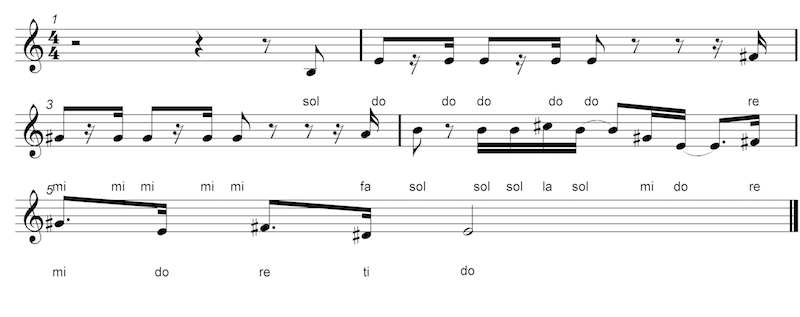
Don’t worry about the complicated-looking rhythm. You can play it by ear with no problem, if you can’t figure it out by following the score.
Long, Long Ago
Our next melody is a bit different from the previous ones:
What is the tonic?
Now sing your solfa scale on that tonic:
Now sing the melody with solfa syllables:
Figure out the real-note scale for transcription purposes and for transfering to your instrument:
Once you’ve done your transcription and/or figured it out on your instrument, check the score with solfa syllables:
Show answer
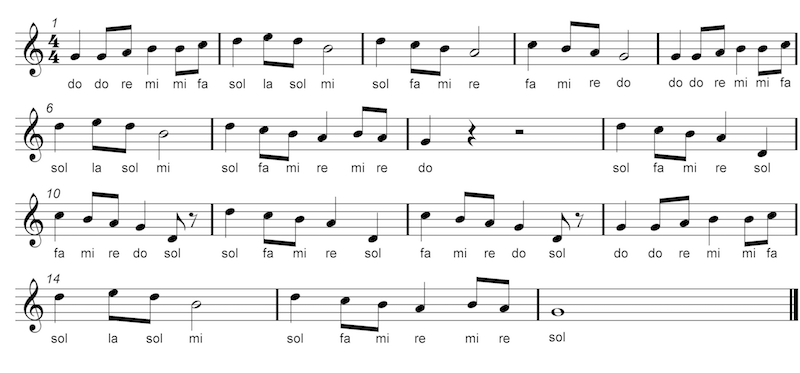
Little Brown Jug
Take a little sip of this melody:
Find the tonic:
From there, the solfa scale:
And now sing the melody in solfa:
Singing the scale with real notes is a great preparation for playing the melody on your instrument:
Check your work with the score:
Show answer
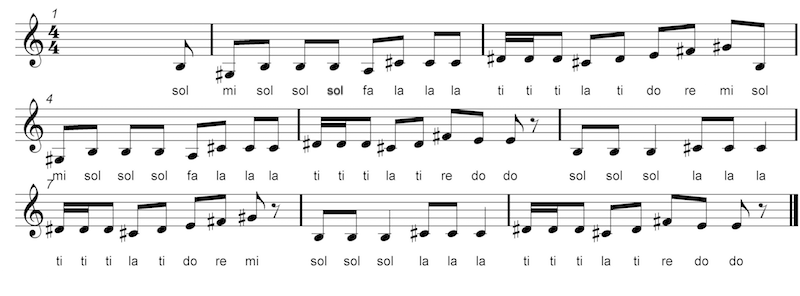
If You’re Happy and You Know It
If you’re happy and you know it, sing some solfa!
Now you take the steps:
- What is the tonic?
- Sing the solfa scale.
- Find which note from the scale fits where in the melody.
- Transfer solfa into real notes. Play on your instrument and/or transcribe.
Now make the correspondence between the notes from the score and the solfa syllables.
Here’s the score to check your work:
Show answer
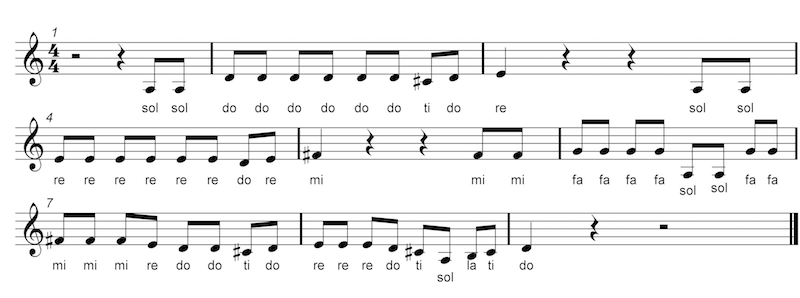
I’ve Been Working on the Railroad
Have you been working on some solfa?
Complete the process as best you can. There’s something new here.
Check the score of this example:
Show answer
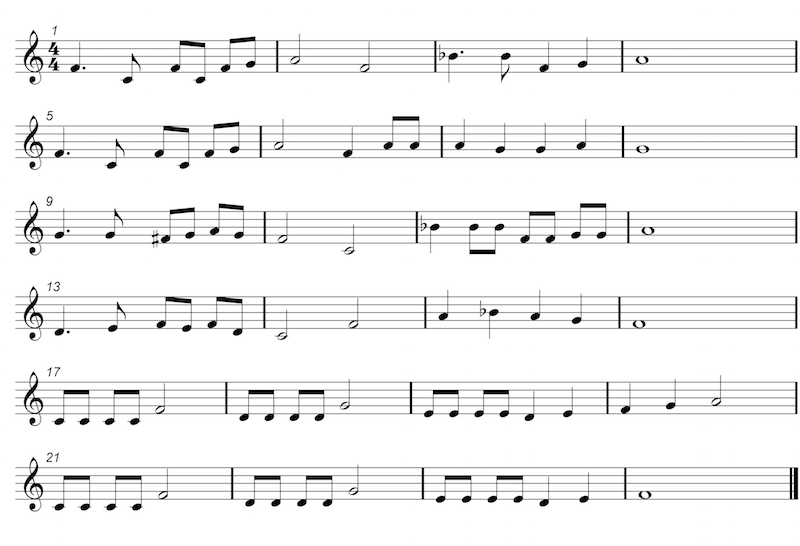
You probably did fine for “If You’re Happy and You Know It” – but I’m guessing that “I’ve Been Working on the Railroad” was a bit hard for you. At the second part of the song (from can’t you hear the whistle blowing…) you probably felt the shift in tonic. It is normal to feel that way: more complex songs fluctuate between close keys that are close by on the Circle of Fifths so the tonic might seem to change at some point.
The tonic of this song is the last note from the score. Listen to the recording to convince yourself of that and compare it with the provided score.
Once you determine your “do”, it will be easy for you to place most of the right solfa syllables on the provided score.
 Did you notice anything different about this example?
Did you notice anything different about this example?
- There is an alien note at bar 9. Despite the importance of the tonic to show us for sure which notes can be used when we transcribe, that F♯ doesn’t fit in our F major scale. If you want to know more about alien notes, stay tuned for our next article.
- In bars 17 and 21 you can hear a special and very important relation: the relation between the dominant and the tonic (sol and do). Look back at the other melodies, and find other examples of this relationship? Hint: Look for the upbeats.
Think of treating solfa like your best friend… because it is! The more you “translate” all the music you hear into solfa, the more you will internalize and visualize what you hear. You will become more active while you listen, you will increase your musical memory, and you will find it easier to link what you hear with your instrument. Keep practicing – as in any great friendship, the more attention you give to solfa, the more happy your relationship with music will be.

